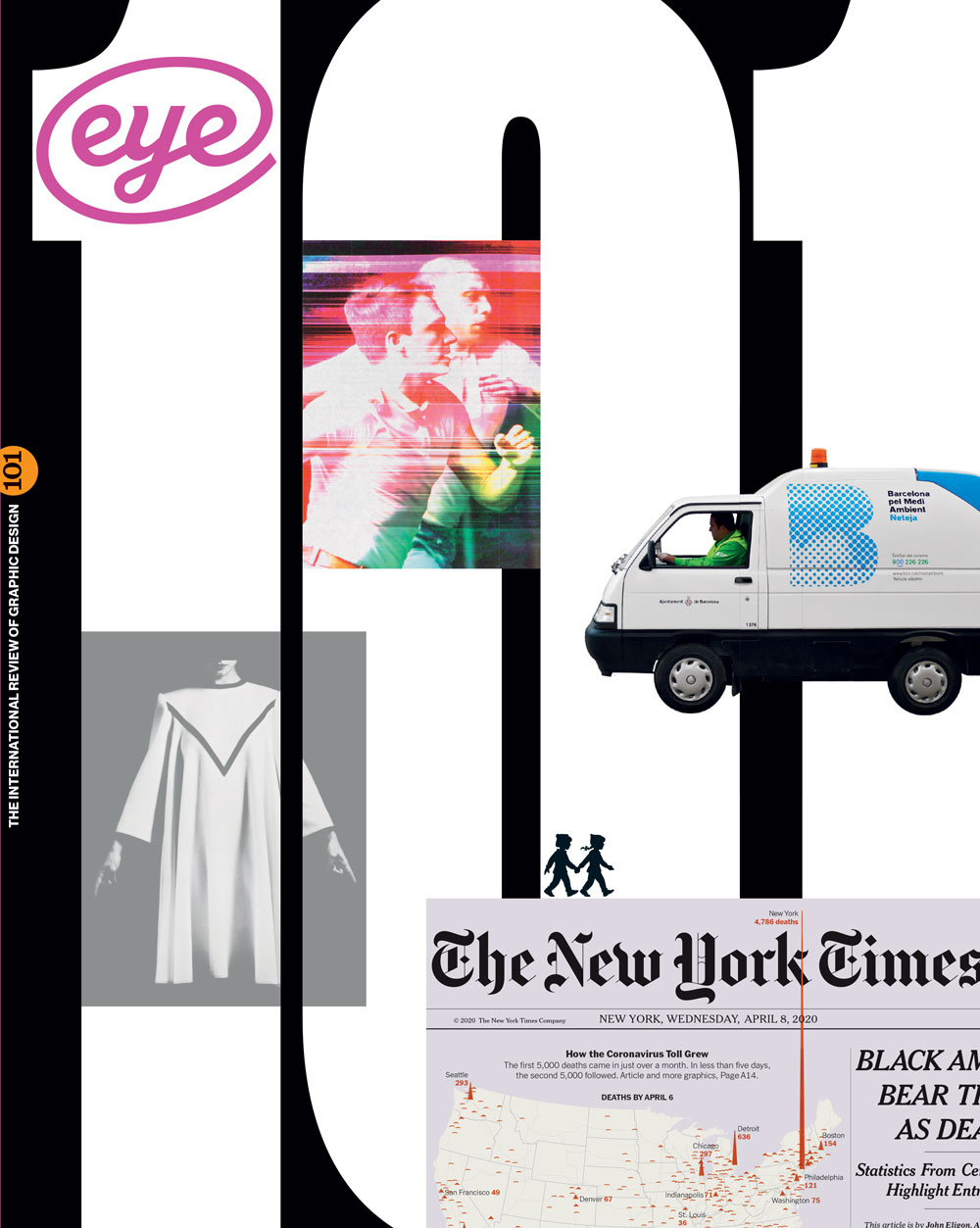Summer 2021
Gender imbalance
How Many Female Type Designers Do You Know?
Written and designed by Yulia Popova. Published by Onomatopee, €22, £24
Within the design publishing landscape, type-focused titles abound, yet type designed by women remains proportionally under-represented within their pages. With How Many Female Type Designers Do You Know? Yulia Popova moves to redress this imbalance, through a concise yet thorough reader on the subject of women in type. ‘My objective’, she states in the prologue, ‘is to make the work of women more visible.’
Presented in a narrow hardcover format, this book expands upon research begun by Popova for her Master’s thesis at the Weißensee Academy of Art in Berlin. Its conversational title belies the rigour exhibited within, and to an extent undersells the scope and ambition of her endeavour. Writing in an affable, accessible tone throughout, she presents a search for ‘possible social, cultural and historical factors that might have had an influence on the careers of women in type design.’
Cover of How Many Female Type Designers Do You Know? (Onomatopee), designed by its author, Yulia Popova. Top. Book spread taken from Chapter E, ‘Showcase of Typefaces’, which features specimens of Legilux by Antonia M. Cornelius and Lionz by Roxane Gataud.

The book comprises three key sections, beginning with research-driven exploration and documentation of gender issues within the discipline. This is followed by the titular conversations with fourteen women working in type, among them Zuzana Licko (see Eye 43), Indra Kupferschmid and the TDC’s Carol Wahler, and concludes with a visual exploration of specimens, samples and compositions by female designers. Popova’s methodology in her first section is thorough. She encompasses biographies of female contributors to the field; surveys data drawn from conferences, courses and awards schemes; and provides a review of existing literature addressing her subject, which highlights the relative scarcity of such enquiry within the discourse thus far.
Broader social, cultural and political factors are considered throughout the book, among them the financial accessibility of further education, underlying social conditioning, and shifting attitudes towards gendered creative aptitude. It’s interesting to note that interviewees and cited sources alike highlight the impact of developing typographic technologies as a valuable democratising force, offering scope for women to become more visible participants within the field.
The list of contributing and featured female designers here is comprehensive, broad-ranging and international in scope, though it makes no claim of totality. The nuanced, diverse perspectives engendered through the fourteen interviews themselves reflect on the subject of gender in type through the fractured lens of various waves of feminist thought, running the gamut from fierce opposition to positive discrimination, on the part of Gayaneh Bagdasaryan, through to numerous acknowledgments (some of them grudging) of the need for more affirmative action.
In her introduction, Popova expresses an intention to document the lie of the land within type design at her time of writing; in that respect, this endeavour has been successful, and the book stands as a useful and informative resource. Some more explicit articulation of her own position on the matter would however have been interesting. It could be argued that the act of researching, writing and publishing this book is itself a statement of her critical position, and to an extent the questions and statistics presented here regarding under-representation and a lack of recognition speak for themselves. The aforementioned diversity of perspectives perhaps offers some explanation for the omission of a clear conclusion: attempting to draw these together may have felt disingenuous to a demographic that refuses to be defined by a single, gendered point of view.
Spread from How Many Female Type Designers Do You Know? (Onomatopee), designed by its author, Yulia Popova.

There remains an important question to be asked of publications such as How Many Female Type Designers Do You Know?, which deliberately highlight female contributions to a specialist field. Might the act of presenting an explicitly female-focused study further perpetuate the ‘othering’ of women’s contributions within the unfolding history of type design? The aim may be to challenge prior tendencies to present female designers as a subordinate sector within the discipline, yet singling out their contributions, as this book does, may yet reinforce that impression. Such a dilemma continues to perplex the broader field of design publishing in more general terms.
This is a necessary, important and useful book, whose value might be measured both by its scope to inform and by its capacity to act as a catalyst for further enquiry and effect future change. Through Popova’s contribution and those of her contemporaries, her subjects and her successors, readers can hope that the need for such segregated examination of female contributions to the field may soon be surpassed, and that a greater parity of representation within future typographic histories might be achieved.
Anna Lisa Reynolds, writer, editor, London
First published in Eye no. 101 vol. 26, 2021
Eye is the world’s most beautiful and collectable graphic design journal, published for professional designers, students and anyone interested in critical, informed writing about graphic design and visual culture. It is available from all good design bookshops and online at the Eye shop, where you can buy subscriptions and single issues.

